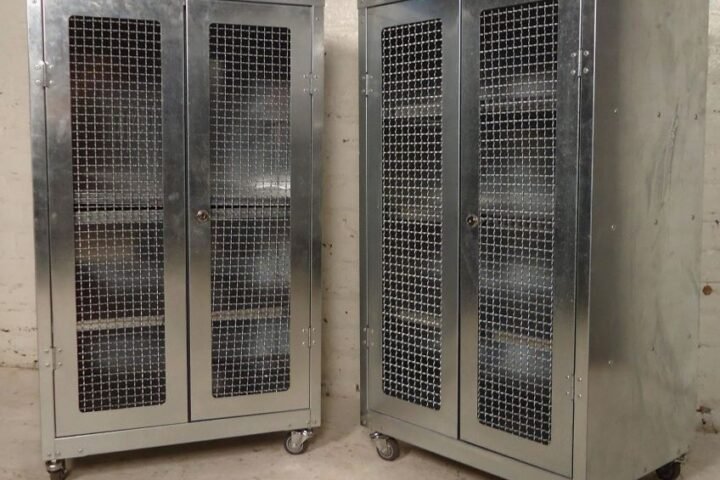Steel cabinet design has become a significant component in modern office setups, merging durability, functionality, and style. With growing demand for secure storage and minimalistic interiors, these cabinets have transitioned from being purely utilitarian objects to becoming essential elements of workplace aesthetics. Their sleek frames, smooth finishes, and versatile configurations make them ideal for businesses aiming to keep workspaces both organized and appealing. Moreover, the materials used in these cabinets are often resistant to wear, fire, and pests, making them a practical investment for long-term office utility. Whether it’s for storing confidential documents or organizing office supplies, steel cabinets offer a blend of reliability and innovation that enhances both performance and presentation in corporate environments.
Key Features That Define Quality Steel Cabinet Design
When choosing a steel cabinet for your office, understanding the features that reflect a high-quality design is crucial. One of the most essential features is the gauge of steel used, which directly affects the strength and longevity of the cabinet. Cabinets made with thicker steel offer better resistance to dents and warping over time. The coating is another significant consideration, as powder-coated surfaces provide a protective layer that resists scratches, moisture, and corrosion. Design elements such as smooth-gliding drawers, adjustable shelving, ventilation slots, and lockable doors enhance functionality. Additionally, aesthetic details like neutral colors, matte finishes, and clean lines ensure that the cabinet complements a variety of interior themes. Innovative steel cabinet design is not just about visual appeal; it’s about creating an ergonomic and efficient storage system tailored to dynamic office needs.
The Rise of Customization in Steel Cabinet Design
Modern workplaces are not one-size-fits-all, and neither are their storage solutions. The increasing demand for customized office furniture has given rise to personalized steel cabinet design that caters to specific requirements. Businesses today look for storage that can adapt to their workflow—be it through modular units, mobile cabinets on wheels, or integrated workstations that incorporate filing drawers and shelves into a desk setup. Adjustable shelving, removable dividers, and options for locking mechanisms give users the freedom to define how they store items securely and conveniently. Furthermore, modern manufacturers offer cabinets in various heights, widths, and depths, ensuring maximum space optimization without compromising on accessibility. In some designs, you’ll also find integrated charging stations or USB ports to accommodate tech-friendly workspaces, which is a nod to the growing blend of function and tech integration in contemporary office environments.
Benefits of Steel Cabinet Design for Office Efficiency
Adopting smart steel cabinet design in an office contributes significantly to operational efficiency. First, the structural integrity of steel ensures that cabinets can bear heavy loads without sagging or breaking, making them ideal for storing large files, office equipment, or sensitive materials. Their robust construction also offers an added layer of security, especially when equipped with advanced locking systems or electronic access controls. Steel cabinets are easy to maintain, require minimal cleaning, and are resistant to damage caused by pests or humidity—issues commonly found with wooden alternatives. Furthermore, these cabinets help declutter work areas, contributing to a more focused and productive work environment. With proper categorization and labeling, staff can easily locate items, thereby reducing the time spent searching through unorganized storage spaces. Ultimately, well-planned cabinet systems enhance workflow, save valuable floor space, and project a professional image to clients and visitors.
Eco-Friendly Aspects of Steel Cabinet Design
In today’s sustainability-conscious world, steel cabinet design aligns well with green office initiatives. Steel is one of the most recycled materials globally, and many manufacturers now use recycled or recyclable steel in the production of cabinets. This significantly reduces the carbon footprint associated with office furniture manufacturing. In addition, powder coating—a common finish for steel cabinets—is more environmentally friendly compared to traditional paint, as it emits fewer volatile organic compounds (VOCs) into the atmosphere. These sustainable choices make steel cabinets an ideal solution for companies aiming to meet green building certifications or simply promote eco-friendly workspaces. Long-lasting by nature, steel cabinets also reduce the frequency of replacement, which contributes to less waste over time. By choosing responsibly manufactured cabinets, businesses not only invest in durability and functionality but also align their operations with broader environmental values.
Integration of Technology in Modern Steel Cabinet Design
As workplaces evolve with digital transformation, so does the role of storage solutions. New steel cabinet design trends often incorporate technology to meet modern office demands. Some cabinets now come with RFID locks, fingerprint scanners, or electronic keypad access to safeguard confidential documents and sensitive information. Others are integrated with sensors that track usage, helping facility managers monitor inventory or manage access. This is especially useful in corporate, educational, or healthcare environments where secure and organized storage is essential. USB charging ports and LED lighting within cabinets offer added convenience, especially in collaborative work zones or open-office setups. These features are not only enhancing security but also creating a more interactive and intelligent work environment where furniture serves both traditional and digital functions seamlessly.
Choosing the Right Steel Cabinet Design for Your Workplace
Selecting the best steel cabinet for your office begins with assessing your storage needs. Consider the type of materials you need to store—documents, electronics, supplies, or confidential files—and match them to a cabinet with suitable capacity, locking features, and compartmentalization. Think about the layout and available space; vertical cabinets save floor space, while lateral ones offer easier access to stored items. Also, don’t overlook design compatibility; the cabinet should blend well with existing décor while enhancing the office’s visual appeal. It’s wise to invest in cabinets that allow future flexibility—modular systems that can be expanded or rearranged as the team or needs grow. Finally, working with trusted manufacturers who specialize in steel cabinet design ensures quality craftsmanship, customer support, and the potential for customization. A well-chosen cabinet can make a substantial difference in how your workspace operates on a daily basis.
Conclusion: Embrace Durable Innovation with Steel Cabinet Design
In conclusion, steel cabinet design has redefined how modern offices approach storage. By combining strength, efficiency, and visual elegance, these cabinets support a professional atmosphere while adapting to changing organizational needs. From customizable features to sustainable materials and smart integrations, they play a vital role in improving workplace productivity. Businesses looking to streamline operations and make long-lasting investments should consider adopting these versatile storage solutions. For those in search of trusted options, office furniture offers expertly crafted steel cabinet designs tailored to meet the demands of forward-thinking workspaces.











